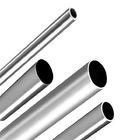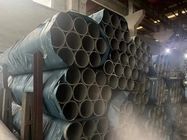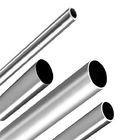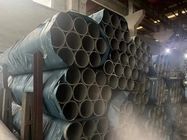AISI ASTM Round Decor Seamless Welded SS stainless steelTubes Pipes 316L 310S 321 201 304
| Place of Origin | China |
|---|---|
| Brand Name | Hongyiyuan |
| Certification | ISO |
| Model Number | 321, 316, 316L, 316Ti, 316F, 316LTi, 309S, 310, 310S, 904L |
| Minimum Order Quantity | 1 Ton |
| Price | Negotiate |
| Packaging Details | Standard Seaworthy Package |
| Delivery Time | 7-15 work days after paid |
| Payment Terms | T/T |
| Supply Ability | 1000tons/months |

Contact me for free samples and coupons.
Whatsapp:0086 18588475571
Wechat: 0086 18588475571
Skype: sales10@aixton.com
If you have any concern, we provide 24-hour online help.
x| Product | Stainless Steel Pipe | Standard | ASTM GB AISI JIS EN |
|---|---|---|---|
| Length | 3000mm, 6000mm Or As Required | Price Term | EXW,FOB,CIF,FCA |
| Processing Service | Punching, Cutting,Welding | Application | Construction,Decoration,Industry,machine Building,Exhaust Pipe |
| Delivery Time | 7-15 Days After Paid | ||
| Highlight | 321 Seamless Welded SS Tubes Pipes,310S Seamless Welded SS Tubes Pipes,316L Seamless Welded SS Tubes Pipes |
||
Product Description
The main issue with welding stainless steel alloy is that they are susceptible to intergranular corrosion. However, the exception for such conditions is the use of heat resisting steels such as Stainless Steel 321 Seamless Pipe. An austenitic alloy, grade 321 is stainless steel that is stabilized by the inclusion of titanium in its chemistry. Unlike other stainless steels that contain higher amounts of carbon in their alloy, titanium is added to the alloy of Stainless Steel 321 Pipe, which prevents the formation of carbide precipitates. The formation of carbide precipitates is common between a temperature range of 427°C – 816°C. At elevated temperatures such as this, the carbon present in steels like 304 or 316 together with chromium reacts with the atmospheric oxygen, thus forming precipitates.
Chemical Composition
| Grade | C | Si | Mn | P | S | Ni | Cr | Mo |
| 201 | ≤0 .15 | ≤0 .75 | 5. 5-7. 5 | ≤0.06 | ≤ 0.03 | 3.5 -5.5 | 16 .0 -18.0 | - |
| 202 | ≤0 .15 | ≤l.0 | 7.5-10.0 | ≤0.06 | ≤ 0.03 | 4.0-6.0 | 17.0-19.0 | - |
| 301 | ≤0 .15 | ≤l.0 | ≤2.0 | ≤0.045 | ≤ 0.03 | 6.0-8.0 | 16.0-18.0 | - |
| 302 | ≤0 .15 | ≤1.0 | ≤2.0 | ≤0.035 | ≤ 0.03 | 8.0-10.0 | 17.0-19.0 | - |
| 304 | ≤0 .0.08 | ≤1.0 | ≤2.0 | ≤0.045 | ≤ 0.03 | 8.0-10.5 | 18.0-20.0 | - |
| 304L | ≤0.03 | ≤1.0 | ≤2.0 | ≤0.035 | ≤ 0.03 | 9.0-13.0 | 18.0-20.0 | - |
| 309S | ≤0.08 | ≤1.0 | ≤2.0 | ≤0.045 | ≤ 0.03 | 12.0-15.0 | 22.0-24.0 | - |
| 310S | ≤0.08 | ≤1.5 | ≤2.0 | ≤0.035 | ≤ 0.03 | 19.0-22.0 | 24.0-26.0 | |
| 316 | ≤0.08 | ≤1.0 | ≤2.0 | ≤0.045 | ≤ 0.03 | 10.0-14.0 | 16.0-18.0 | 2.0- |
| 316L | ≤0 .03 | ≤1.0 | ≤2.0 | ≤0.045 | ≤ 0.03 | 12.0 - 15.0 | 16 .0 -1 8.0 | 2.0 - |
| 321 | ≤ 0 .08 | ≤1.0 | ≤2.0 | ≤0.035 | ≤ 0.03 | 9.0 - 13 .0 | 17.0 -1 9.0 | - |
| 630 | ≤ 0 .07 | ≤1.0 | ≤1.0 | ≤0.035 | ≤ 0.03 | 3.0-5.0 | 15.5-17.5 | - |
| 631 | ≤0.09 | ≤1.0 | ≤1.0 | ≤0.030 | ≤0.035 | 6.50-7.75 | 16.0-18.0 | - |
| 904L | ≤ 2 .0 | ≤0.045 | ≤1.0 | ≤0.035 | - | 23.0·28.0 | 19.0-23.0 | 4.0-5.0 |
| 2205 | ≤0.03 | ≤1.0 | ≤2.0 | ≤0.030 | ≤0.02 | 4.5-6.5 | 22.0-23.0 | 3.0-3.5 |
| 2507 | ≤0.03 | ≤0.8 | ≤1.2 | ≤0.035 | ≤0.02 | 6.0-8.0 | 24.0-26.0 | 3.0-5.0 |
| 2520 | ≤0.08 | ≤1.5 | ≤2.0 | ≤0.045 | ≤ 0.03 | 0.19 -0. 22 | 0. 24 -0 . 26 | - |
| 410 | ≤0.15 | ≤1.0 | ≤1.0 | ≤0.035 | ≤ 0.03 | - | 11.5-13.5 | - |
| 430 | ≤0.1 2 | ≤0.75 | ≤1.0 | ≤ 0.040 | ≤ 0.03 | ≤0.60 | 16.0 -18.0 | - |
Surface Description
|
Surface |
Definition |
Application |
|
No.1 |
The surface finished by heat treatment and pickling or processes corresponding there to after hot rolling. |
Chemical tank, pipe etc. |
|
No.3 |
Those finished by polishing with No.100 to No.120 abrasives specified in JIS R6001. |
Kitchen utensils, Building construction etc. |
|
No.4 |
Those finished by polishing with No.150 to No.180 abrasives specified in JIS R6001. |
Kitchen utensils, Building construction, Medical equipment etc. |
|
2B |
Those finished, after cold rolling, by heat treatment, pickling or other equivalent treatment and lastly by cold rolling to given appropriate luster. |
Medical equipment, Food industry, Construction material, Kitchen utensils etc. |
|
BA (No.6) |
Those processed with bright heat treatment after cold rolling. |
Kitchen utensils, Electric equipment, Building construction etc. |
|
Mirror (No.8) |
Shinning like a mirror |
Building construction, decoration etc. |
|
Hairline |
Those finished polishing so as to give continuous polishing streaks by using abrasive of suitable grain size. |
Building Construction etc. |
Product Packing
![]()
Product Application
Stainless steels are most commonly used for their corrosion resistance. The second most common reason stainless steels are used is for their high temperature properties. Stainless steels can be found in applications where high temperature oxidation resistance is necessary, and in other applications where high temperature strength is required. The high chromium content which is so beneficial to the wet corrosion resistance of stainless steels is also highly beneficial to their high temperature strength and resistance to scaling at elevated temperatures
![]()
FAQ
Q: What's your advantage?
A: We have a large number of professional technical personnel, more competitive prices than other steel companies and the best after-sales service.
Q: Do you offer after-sales services?
A: Certainly. If you have any questions, please feel free to contact us. We will do our best to solve the problems and satisfy you.
Q: How about the delivery time?
A: Within 4-35 days after we confirm your orders. Depending on different products.
Q: How do you control quality?
A: All products are produced in strict accordance with relevant product standards, and the products are tested by relevant instruments and experimental equipment during the production process.
Q: Does the product have quality inspection before loading?
A: Of course, all our products have undergone strict quality inspection before packing. We accept customer’s inspection before loading.






